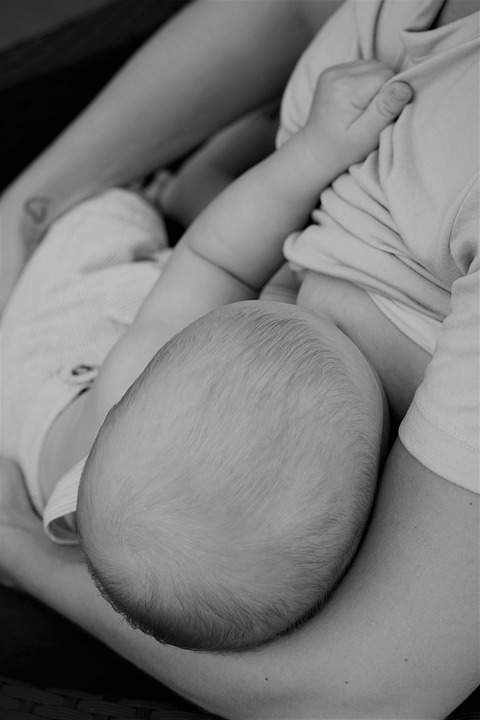
Feeding a new born – Breastfeeding and formula feeding
Feeding a new born
Feeding a new born is the one of the first decisions that you need to make, breast feed or formula feed. Every mother wants the best for her child. Best think that you can do is to breast feed your new born. But keep in mind, you will not be a lees mother than breast feeding mother if you choose bottle feeding for any reason.
The most beautiful thing that can happen to a family is having a baby. The joy that comes with a newborn does not diminish over time, but rather rises. It is essential to welcome a newborn into the world with warm embraces and best wishes since they are priceless and the future creators of the universe.
When a new family member arrives, everyone in the house goes through a time of adjustment. Everything centers around the new family member and, of course, the mother in the initial days and weeks after the birth. During this time, moms are looking for answers to a variety of questions. We’ll do our best to assist you and address some of the most frequently asked concerns about newborn and infant nutrition.
How you feed your baby is the first nutrition decision you make for your child. These breastfeeding and bottle-feeding recommendations can assist you in determining which method is best for you and your baby.
Here are some tips on how to breastfeed successfully
Newborns for at least the first six months of their lives needs breast milk. If the mother has no health issues. Breast feeding a new born is possible for most women with medical issues. Some medications, illicit substances, and alcohol can pass into your breast milk and damage your infant. If you’re unsure about whether or not you should breast feed, speak with your doctor.
Breast feeding a new born should begin as soon as the baby is born
Is possible to not have milk at first. Colostrum is a vital component of your baby’s health. The infant already understands how to suck and locate the breast when it is born. Skin-to-skin contact helps infants regulate their body temperature and exposes them to healthy microorganisms from their mother’s skin. These beneficial bacteria help newborns’ immune systems develop by protecting them from infectious illnesses.
Nursing in the proper position when you are feeding a new born
It’s a good idea to experiment with different positions because you can nurse your baby in a variety of ways. This allows your baby to obtain precisely the correct mouthful of breast milk to feed efficiently and effortlessly.
The mouth of the infant should be wide open. And also the nipple should be placed as deeply as feasible. The breast should penetrate the mouth of the infant as much as feasible. Ascertain that the infant sucks both the nipple and the areola (dark circle around the nipple). Breast feeding a new born incorrectly can cause the nipples to break and the infant to not receive enough milk.
Breast feeding in the side-lying position entails reclining on your side and placing your baby on their side next to you. Your baby’s head will be at the level of your breast, and their feet will be at your feet when you and your baby face each other belly to belly. When you wish to feed your baby while lying down, the side-lying breast feeding posture is ideal. It’s also a good idea to learn this position since after you’ve mastered a few various nursing positions; you’ll be able to switch between them throughout the day.

It might take up to 40 minutes to finish a breastfeeding session
So take a seat in a position that is relaxing to you. Many women prefer to sit in an upright position because it is more comfortable. If the infant is at your breast level, it will be the simplest for you. As a result, use cushions or something similar to support the infant and do not attempt to nurse while holding the baby in the air.
Keep in mind that breast feeding a new born lasts far longer than the clock when it comes to glancing at the clock during nursing. To put it another way, breast feeding does not need the use of a watch. When you put too much emphasis on time, it’s easy to lose sight of what actually important. Your baby will inform you of all you need to know. Allowing the clock and the passage of time to distract you is not a good idea. Instead, keep an eye on and trust your baby.
There are no require baby supplements
You don’t need to use any water or formula milk. Your milk contains everything your baby requires. Giving him supplements may decrease his urge to breastfeed, resulting in less milk production in your breasts. Breast feed a newborn regularly and your breasts will produced more milk.
Make sure you don’t get mastitis!
Mastitis is a kind of breast inflammation that can result in infection. Mastitis can make you feel like you have the flu; you may be feverish and have aches and pains throughout your body. Fever, uncomfortable lumps in the chest, and redness are all signs of mastitis. If you experience any of these symptoms, visit a doctor right once.
Engorged Breasts
The new mother produces a lot of milk, and it can happen on the first day after giving birth, resulting in discomfort and sickness. We got the infant to suck whenever we wanted to make things easy. Your body will adjust to its demands and make only as much milk as it need. Meanwhile, the mother might relieve her discomfort by using warm compresses or taking a hot bath.
Engorged breasts are painful. They have the sensation of being heavy, hard, heated, and sensitive, as if they are about to explode! Engorgement, in addition to being uncomfortable, can lead to additional nursing issues if left untreated. Knowing how to spot engorgement will help you cure it quickly and avoid problems.
In the first several weeks after giving birth, most women suffer some engorgement. As milk production rises, your breasts expand and grow due to shifting hormone levels. Although it may appear that they are storing milk, engorgement is more than that. To increase milk production, your body sends more blood and fluids to your breasts.
Eat healthy and drink plenty of fluids when you are breast feeding a new born
Keep a consistent eating routine. Nursing mothers should eat on a regular basis as well. Even if you have a hectic schedule, you should never skip meals. Breakfast may appear to be the one meal for which you just do not have time, but there are a few quick and nutritious alternatives: Toss dried fruit and oats into nonfat yogurt, sprinkle berries over cereal or oatmeal, or add chopped peppers and carrots to your usual cream cheese bagel. When it comes to dinner, make nutritious dishes in excess and freeze the leftovers for later. Make sure you get adequate sleep. This will assist you in avoiding any breast irritation.
More Tips
Breast feed your baby whenever is hungry. It tells your mammary glands that they need to make more milk. Allow one breast to empty first; if it is nearly empty, the lipid content of the milk will rise. This calorie-dense milk is essential for the baby’s weight increase.
Make sure your kid doesn’t simply suck on the nipple; he can easily suck it as well, so only give him the breast when he’s hungry. While drinking, the baby’s lips should nearly completely cover the areola.
When to begin formula feeding
If your baby is not gaining weight despite frequent nursing, you should contact a doctor and decide whether or not you should add formula in your meals with him. After delivery, babies lose around 10% of their weight, but by the fifth day of life, the weight should be increasing. They should achieve the weight they had at birth during the second week. If your breasts feel firm and full, it suggests you have enough of milk, but the baby may not be able to suck enough.
If there is enough milk, formula can be provided if the mother requests it. But it is recommended that you breastfeed exclusively for at least the first month to establish a rhythm. After that you can add one meal of formula.
Adapted milks are divided into many lines for children of various ages. Because each line’s composition corresponds to a specific stage of a child’s growth, it’s critical to pick the right one. Constipation, diarrhea, and colic are all possible side effects. Adapted milks are having different tastes. It’s highly probable that your baby will reject the first milk you feed him, and you’ll have to try several other varieties before finding the perfect one.
It is preferable that the bottle is sanitary and that the pacifier mimics a nipple if it is used as a complement to nursing. This decreases the risk of breastfeeding rejection following the use of an adapted formula. Because formula keeps a baby fuller for longer, it is frequently suggested before bedtime. As a result, the infant will sleep for longer periods of time in a tranquil state.
When and how much should you feeding a new born with a bottle?
After breast milk, milk formula is the next best option. A milk formula fortified with iron is a viable replacement for an infant. Milk formulae, while not identical to breast milk in composition, are developed to satisfy the nutritional demands of this age range. It is used as a replacement or supplement for breast milk.
A bottle-fed baby will take 60-90 mL of milk formula every meal during the first month. You’ll need to eat every three to four hours for the first couple of weeks. It’s ideal to feed the baby on demand in the beginning, that is, when he begins to cry for food. Breast feed babies consume less milk per meal but drink it more often.
If your baby sleeps more than four to five hours a night and begins to miss meals during the first month, wake him up and give him a bottle. The newborn will consume at least 120 mL of milk every meal by the end of the first month, with a feeding pattern that is generally regular, such as every four hours.
Depending on the supplement, your baby will consume 180-240 mL of milk every five hours at six months. The amount of milk a baby requires (whether breastfed or formula-fed) is determined by his or her weight. The body weight divided by a coefficient of 0.7 and multiplied by 100 is a suitable method for determining the needed milliliters.
Types of formula
Formulas come in a variety of forms. Each one serves a unique purpose, yet they all give nutritious infant nourishment. The formulas are prepared from modified proteins from cow’s milk, with the addition of milk sugar (lactose), lipids, vitamins, and minerals, to satisfy the nutritional demands of the infant. These chemicals are very similar to those found in breast milk.
To compensate for the quantity of iron given by breast milk and to get the formula closer to the needed meal model, it’s preferable to offer an iron-fortified formula.
There are two types of formula: cow’s milk-based and soy-based. The fat, carbohydrate, and protein contents has in cow’s milk formula. Supplemented with vitamins and minerals to make it more healthy and digestible. The soy-based formula, is suggested for newborns with lactose intolerance or food allergies. Also have soy proteins rather of those found in cow’s milk.
Lactose-intolerant newborns need special formulas
Lactose-free formulations, branded FL or LF, are used in cases of congenital or acquired lactose insufficiency. Lactose intolerance causes cramps, gas, bloating, and stomach pain in these newborns and toddlers. Formulations are used to treat acute diarrhea. Special formulas are reimbursed by health insurance. And also recommended by a physician for newborns with allergies to cow’s milk. The immune system overreacts to the proteins in cow’s milk in cow’s milk allergy.
Allergic symptoms might develop right after eating, i.e. after coming into touch with food, or they can take a few hours. Allergy symptoms can affect every organ system (gastrointestinal, cutaneous, and respiratory), as well as cause overall discomfort, frequent weeping, and a loss of weight. Allergies develop throughout the first few months of infancy. The therapy for a cow’s milk allergy includes removing milk proteins from the infant’s diet.
Whether you need to formula feed for your baby due to a nutritional issue or choose a baby diet for another reason, know that all formulas are totally healthy and contain all of the required nutrients for your baby’s appropriate growth and development.
What bottle to choose? Which is better: glass or plastic?
Glass is a permanent substance that is easy to clean and sanitize, as well as being long-lasting. It is, however, more difficult, and there is a risk of breaking.
Which pacifier should I use? Rubber and silicone pacifiers are the two varieties of pacifiers available. The rubber is soft and elastic. And also it is composed of natural rubber. As a result, it’s best for somewhat older youngsters who can bite and whose teeth are still growing.
Because they are constructed of natural materials, it is easier for germs to grow on them. And regular sterilization reduces the quality. The silicone pacifier, on the other hand, is firmer and less elastic, allowing the infant to bite it easily if it has teeth. Silicone pacifier is best used when the infant is under 6 months old, and has no teeth.

More Tips
Use a bottle with a slower flow of milk; Pay care to the teats you choose if you’re combining nursing and bottle feeding. It must have a tiny hole through which milk can drop. The infant must suck as though he or she were suckling on a breast. Your kid may become “lazy” and quit seeking for breasts if sucking from the bottle was too simple for him.
Hold your baby in your arms as you bottle-feed her, as if you were nursing her; For each feeding, switch sides to simulate nursing. Keep the bottle slightly slanted to allow the milk to flow more slowly. During feedings, use short intervals to imitate a pod where milk flows at a variable pace. So make sure the teat is completely filled with formula. And the baby does not swallow air from the bottle.
Feeding a new born – breastfeed and formula-feed
The most essential thing is that your baby is properly fed, well cared for, and loved, regardless of how you feed him or her: breast milk, formula, or a combination of both. So get rid of the maternal guilt!

[…] Feeding a new born – Breastfeeding and formula feeding […]
[…] Feeding a new born – Breastfeeding and formula feeding […]
[…] Feeding a new born – Breastfeeding and formula feeding […]
[…] Feeding a new born – Breastfeeding and formula feeding […]
[…] Feeding a new born – Breastfeeding and formula feeding […]
[…] Feeding a new born – Breastfeeding and formula feeding […]
[…] Feeding a new born – Breastfeeding and formula feeding […]